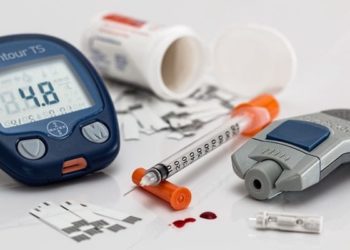Behavioral intervention superior for urge incontinence [Classics Series]
1. For treatment of urgency incontinence, behavioral intervention was associated with the greatest reduction in incontinence episodes and the highest patient satisfaction rates compared to standard drug treatment with oxybutynin or placebo.
Original Date of Publication: December 1998
Study Rundown: Urge urinary incontinence is a costly and common diagnosis among the aging U.S. population. Urgency incontinence is characterized by the sudden, large-volume loss of urine and represents the involuntary loss of urine associated with limited bladder capacity or detrusor instability. In addition to the discomfort and emotional burden associated with urgency incontinence, women with this diagnosis often restrict their activities and accordingly are at increased risk for depression, social isolation and atrophy of their mental and physical capacities. The condition affects just under 40% of American women over age 60 years and to account for more than 15 billion dollars in annual healthcare expenditure. The most common treatment for urgency incontinence is medical management with anti-muscarinic medications. However, these medications can be costly and come with numerous bothersome and predictable side effects, including constipation and dry mouth, which frustratingly for patients increases their perceived need to drink more. Numerous observational studies have demonstrated benefit to biofeedback-assisted devices in reducing incontinence due to teaching patients to control the physiologic responses of their bladder and pelvic muscles to the perceived urge to void. In the present study, authors undertake the first randomized controlled trial comparing the efficacy of a biofeedback-assisted behavioral treatment with both drug treatment, the current standard of care, and placebo to determine the efficacy and patient satisfaction associated with each intervention.
This landmark study demonstrated that just 4 sessions of a biofeedback-assisted behavioral intervention incorporating bladder training and bladder diaries is a more effective and satisfying treatment for urge incontinence among older women. Particularly among older women at risk for polypharmacy and with baseline problems such as constipation that are established side effects of anti-muscarinic medications, such as constipation, the finding that behavioral intervention is more effective than medication was ground-breaking. Strengths of this investigation include parsimonious randomized, double-blinded design. Limitations include selection bias due to volunteer sample and single-site investigation.
Click to read the study in JAMA
In-Depth [randomized controlled trial]: A total of 197 women aged 55 to 92 years were randomized to behavioral intervention with 8 weeks (4 sessions) of biofeedback-assisted behavioral treatment (n = 65), drug treatment with oxybutynin (n = 67) or placebo drug treatment with riboflavin (n = 65). Primary outcome was reduction in frequency of incontinence episodes as determined by patient bladder diaries, patient perceptions of symptomatic improvement, of treatment comfort and of treatment satisfaction.
Among older women with urge urinary incontinence, behavioral intervention was significantly more effective than drug treatment in reducing incontinence episodes (80.7% vs. 68.5%, respectively, p = 0.04) and resulted in the highest patient-perceived improvement scores (74.1% vs. 50.9%, respectively). The minority of patients (14%) in the behavioral treatment group desired to change to another treatment compared to 75.5% in the 2 other treatment groups. Both behavioral intervention and drug treatment were significantly more effective at reducing incontinence compared to placebo (p < 0.001 and p < 0.01, respectively).
Image: PD
©2015 2 Minute Medicine, Inc. All rights reserved. No works may be reproduced without expressed written consent from 2 Minute Medicine, Inc. Inquire about licensing here. No article should be construed as medical advice and is not intended as such by the authors or by 2 Minute Medicine, Inc.







![siRNA against antithrombin alleviates symptoms of hemophilia [PreClinical]](https://www.2minutemedicine.com/wp-content/uploads/2015/04/clot-CCWiki-75x75.jpg)

